Best Mac for photo editing
Photography can be a demanding art, with modern cameras producing huge files and incredible levels of detail. But which Mac should you be looking at if you want to edit these images so that they look as good as possible?
We take a look at the best Mac for photo editing as well as some additional kit that you need to level up your digital photography.
For other creative options, read best Mac for designers and best Mac for video editing. We also have advice about the best photo editing software for Mac and the best free and cheap image editors.
Why Photographers prefer Macs
There was a time in the early days of digital photography when Macs had a huge head start on PCs when it came to photo editing. This was thanks to better colour management, and, in the early years, Adobe Photoshop – which was only available on the Mac until 1993.
Thanks to this early start Macs became the preferred tool for photographers, and even though the photo editing software available today is available on all platforms, Apple’s Macs are still loved by photographers.
In the sections below we will discuss the specs that make the Mac a great choice for photographers. We’ll also discuss the changes coming to Apple’s displays and explain what Apple’s move from Intel to ARM-based processors means for photographers.
Read our guide to photo editing on the Mac. You may also be interested in How to get Photoshop on a Mac and how to get the best deal on Adobe Creative Cloud.
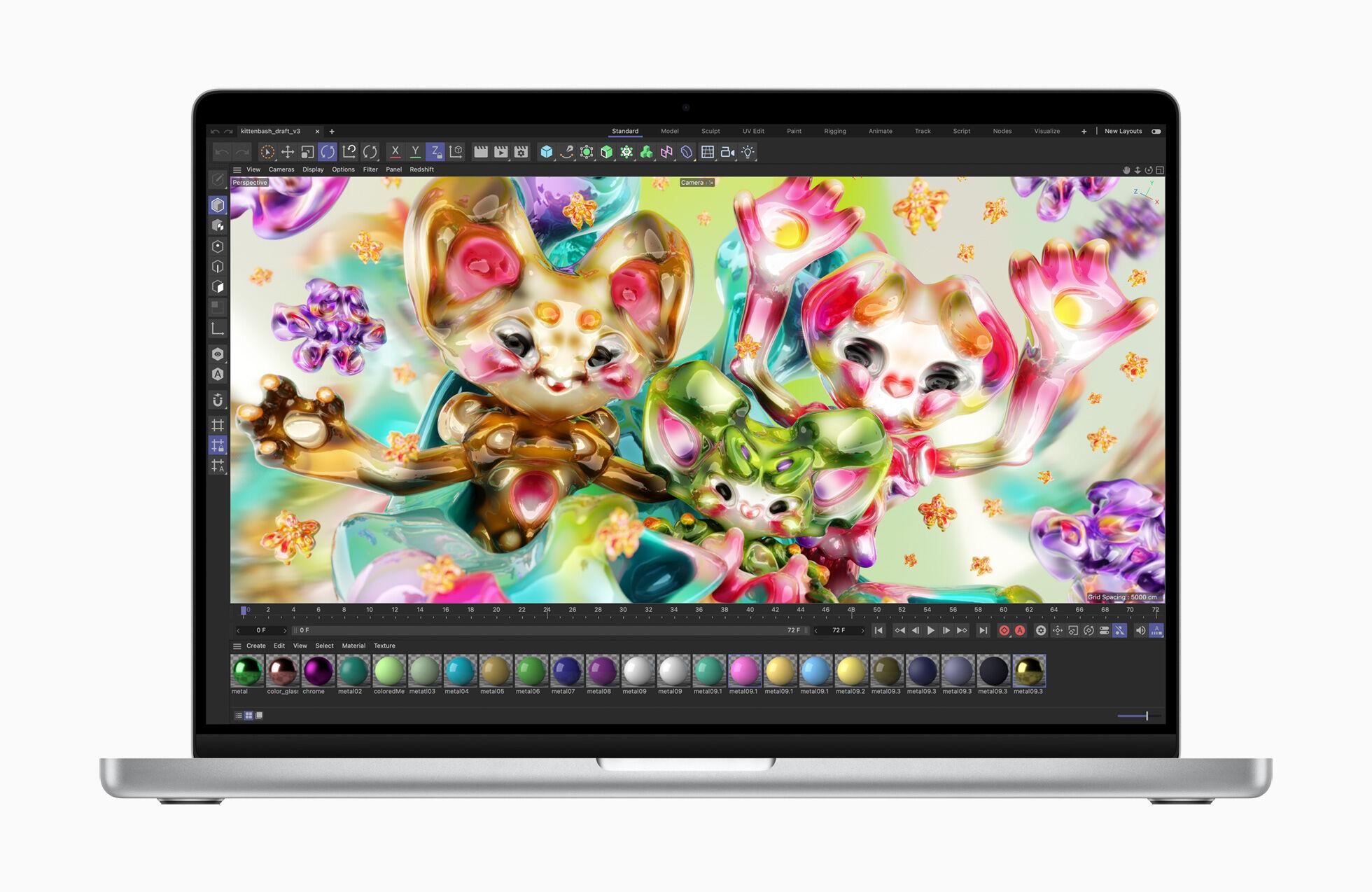

Best Mac configuration for Photography
Before we tell you what we think are the best MacBook and Mac for photographers, we will run through what you need in terms of specs. Here’s what you should consider when making your choice:
Display
One reason why Macs are a great choice for today’s photographers is their excellent colour accuracy and display quality. For example, there is a 4.5K display on the 24in iMac and there was a 5K display on the 27in iMac, but Apple discontinued that model in March 2022 and it’s not yet clear if there will ever be another iMac with a larger screen.
The great quality displays aren’t only reserved for the iMac though. If you want a Mac you can carry around with you – so that you can edit photographs when you are out in the field – then you will want to consider a MacBook Pro.
The 14in MacBook Pro that was introduced in 2021 offers an excellent 3,024 by 1,964 screen (that’s 5.9 million pixels). The 16in MacBook Pro offers even more pixels – 7.7 million. In fact Apple claims that the screen on the 2021 MacBook Pro is the world’s best notebook display.
It is a Liquid Retina XDR display with an extreme dynamic range of, according to Apple: 1,000 nits brightness and 1,600 nits of peak brightness. There is also a 1,000,000:1 contrast ratio, which should make it possible to see detail in shadows, deeper blacks and more vivid colours.
But the big deal about the 14in and 16in MacBook Pro screen is that it brings ProMotion to the Mac. ProMotion first arrived on the iPad Pro and the iPhone 13 Pro and it offers an adaptive refresh rate up to 120Hz (which means it can refresh images 120 times a second). However, it can also varies this refresh rate depending on what’s required – saving battery life.
If you want more pixels you can always plug in a separate 5K or 6K display to use with your MacBook – in which case any Mac could be a great choice for photo editing. In March 2022 Apple introduced the 27in Studio Display (£1,499/$1,599) to join its 32in Pro Display XDR (£4,599/$4,999). You don’t have to spend that much money on a decent display though.
For more information on using a second display with your Mac take a look at how to use a second screen with a Mac and our roundup of the best Mac monitors and displays.
Processor
It’s almost been two years since Apple announced that it would be moving from Intel processors to its own Apple silicon processors. Apple has transitioned many of its Macs to this new silicon, introducing the M1, M1 Pro, M1 Max and the M1 Ultra with various CPU and GPU options. It’s safe to say that the change has been an incredibly positive one.
First up we had the eight-core M1 processor, which proved itself to be as good as high-end Intel options. One benefit for photographers using the M1 is that of the eight CPU cores, four are performance cores and four are efficiency cores. What this means is that if your Mac is indexing your photo library in the background while you are busy editing a RAW image you shouldn’t experience any slow downs, because the tasks will be divided between the cores in the most efficient way.
Then the M1 Pro and M1 Max arrived with the 14in and 16in MacBook Pro in 2021. These supercharged processor options bring even more CPU and GPU cores.
Then in March 2022 Apple added the M1 Ultra to the range, this combines two M1 Max chips for double the amount of CPU and GPU cores, and support for twice as much Unified Memory (RAM). The M1 Ultra is an option for the Mac Studio.
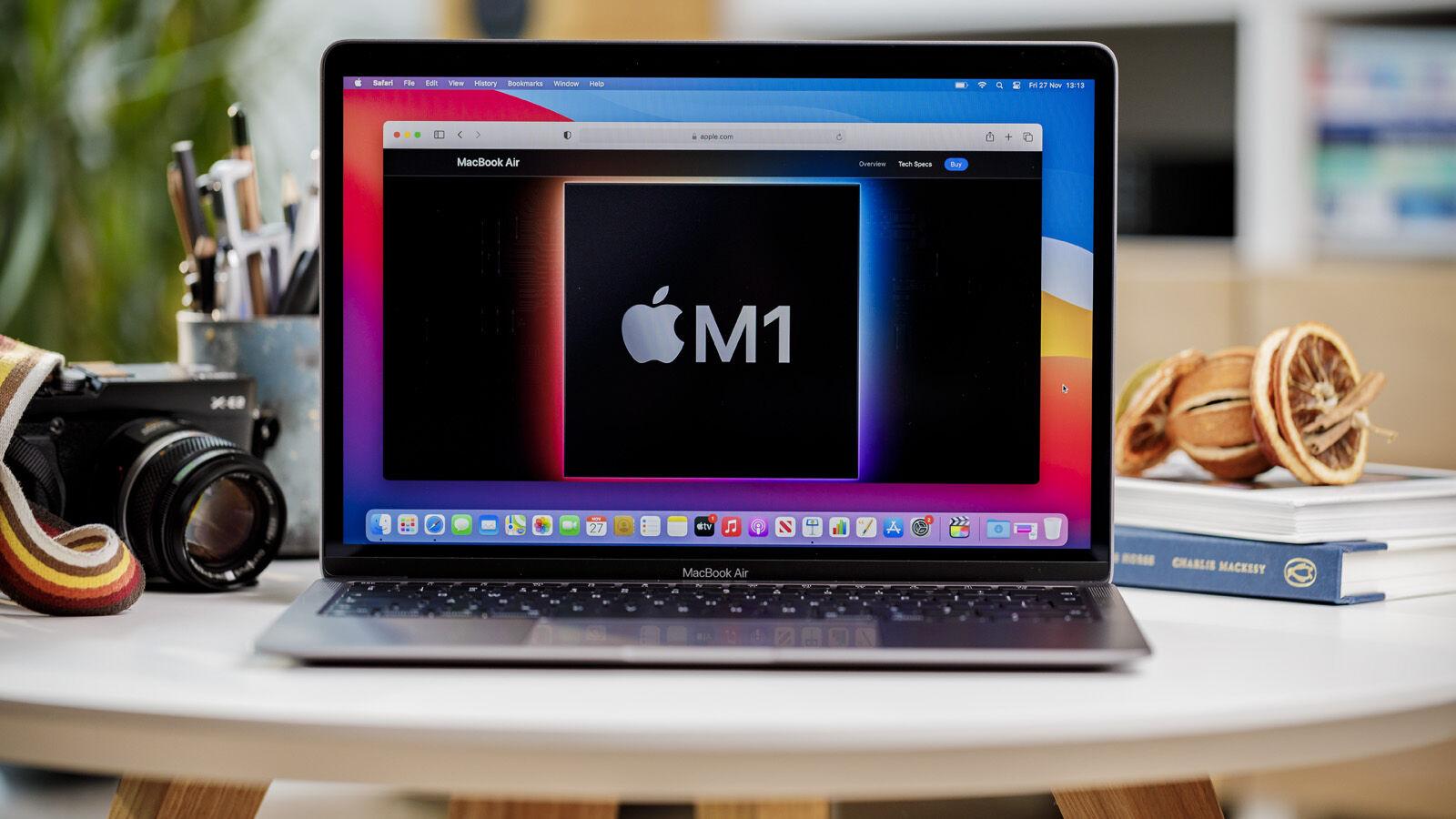

Graphics
One of the disadvantage of the M1 Macs compared to the M1 Pro, Max and ultra options is the number of graphics cores, but obviously the extra graphic capacity comes at a price.
While the 8-core M1 graphics have proven themselves against Intel’s integrated graphics in their predecessors, if you are working with very high res images you might previously have considered discrete graphics. At least that was the case prior to the introduction of the 14in and 16in MacBook Pro in 2021.
These new MacBook Pro models offer up to 32-core GPU options (although there is a 16-core GPU in the M1 Pro, or a cheaper 14-core option). These have proven themselves against the discrete graphics previously found in the16in MacBook Pro and in the (now discontinued) 27in iMac.
The charts below show just how well the graphics in these new Macs perform. You may also be interested to read about the Fastest Mac.
RAM
It is not possible to update the RAM (aka Unified Memory) on any Mac that features any M1-series chip, so you need to make sure you are buying a Mac with enough memory for your needs.
This highlights a particular disadvantage with the M1 chip, you cannot have more than 16GB Unified Memory in those models. In comparison the M1 Pro can support 32GB, the Max 64GB and Ultra 128GB RAM.
16GB RAM should be plenty though. The RAM in an M1 Mac works differently to the RAM in an Intel Mac – it’s known as Unified Memory and can be accessed by both the graphics and processor cores whenever they need to.
But if you think you will need more than 16GB RAM then the M1 Pro, M1 Max or the M1 Ultra will be the way to go.
Storage
As a photographer having enough space to store your extensive image library is likely to be one of your key requirements, although you may find that there are cloud storage options, or cost effective external storage, that suit you.
We suggest that the minimum storage capacity to consider would be 512GB – which rules out the entry-level 13in MacBook Pro and MacBook Air. If you want more than that the M1 Macs offer up to 2TB SSD, while the 14in and 16in MacBook Pro and the Mac Studio offer up to 8TB.
An 8TB SSD has a very high price though – a better option might be an external SSD, which as long as you connect via USB C or Thunderbolt, should offer reasonable transfer speeds. We have a roundup of the best external SSDs for Mac and should you prefer capacity over speed there’s also best external hard drives for Mac.
Battery life
One last area that will matter greatly if you are likely to use your Mac to edit photos when you are out visiting clients is battery life. Here the new Macs with Apple’s own processors really take the lead, with the 16in MacBook Pro offering 21 hours of battery life – compared to 11 hours previously. Here’s how the battery life in the current Macs compare:
- 14in MacBook Pro – up to 17 hours
- MacBook Air – up to 18 hours
- 13in MacBook Pro – up to 20 hours
- 16in MacBook Pro – up to 21 hours
Ports
As a photographer you may be hoping for a SD card reader on your Mac. The fantastic news then is that the 14in and 16in MacBook Pro and the Mac Studio all offer an SDXD card reader (on the Mac Studio this is UHS-II).
The 14in and 16in MacBooks also offer three Thunderbolt 4/USB-C ports, HDMI and charge via a MagSafe 3 port.
The Mac Studio offers either four Thunderbolt 4 ports and two USB-A ports or or six Thunderbolt 4 ports and two USB-A ports and an additional two USB-C ports (depending on the model you choose). (Those Thunderbolt ports can be used for USB-C too).
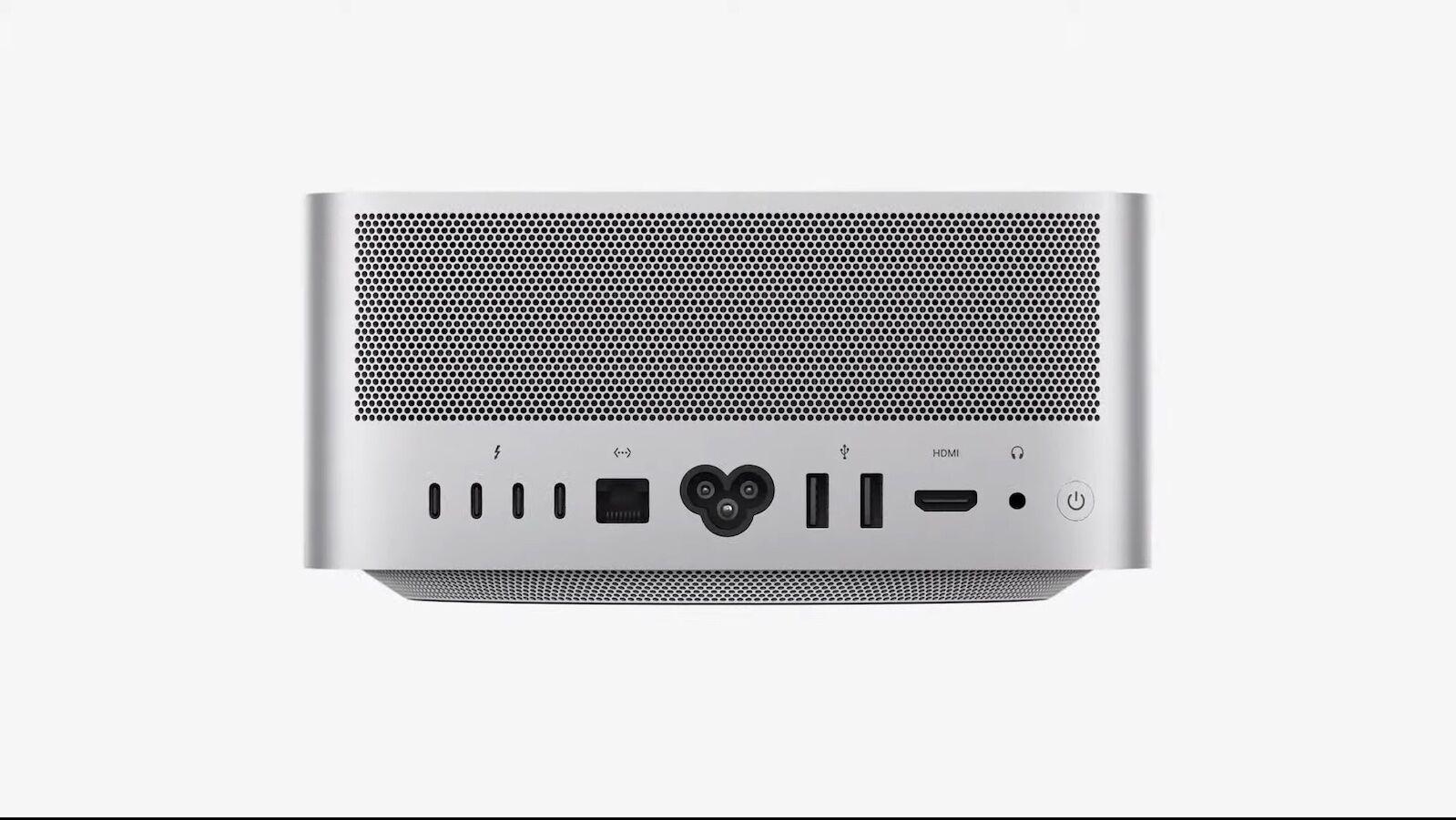

The M1 MacBook Pro and MacBook Air offer just two Thunderbolt/USB 4 ports. This may be sufficient for your needs – check out these USB C adapters and hubs if you want to add more ports. For example, the Twelve South StayGo costs £99.99 from Amazon, and extends your Mac with eight extra ports, including USB-C 3.1 for 85W Power Delivery (PD) charging of the laptop; an HDMI port; two 5Gbps USB-A 3.0 ports, and another USB-A port; Gigabit Ethernet; and SD and Micro SD card readers.
The 24in iMac has a different selection of ports depending on the model you choose. One 24in iMac offers two Thunderbolt/USB 4 ports while the other offers an additional two USB 3 ports. This smaller iMac model no longer has a card reader though.
The Mac mini also has a neat selection of ports including: Two Thunderbolt/USB 4 ports, two USB-A ports and an HDMI port. However, currently the Mac mini only offers the M1 chip (alongside a stray Intel-powered model). It lacks the SDXD card reader offered by the Mac Studio and the 14in and 16in MacBook Pro models though.
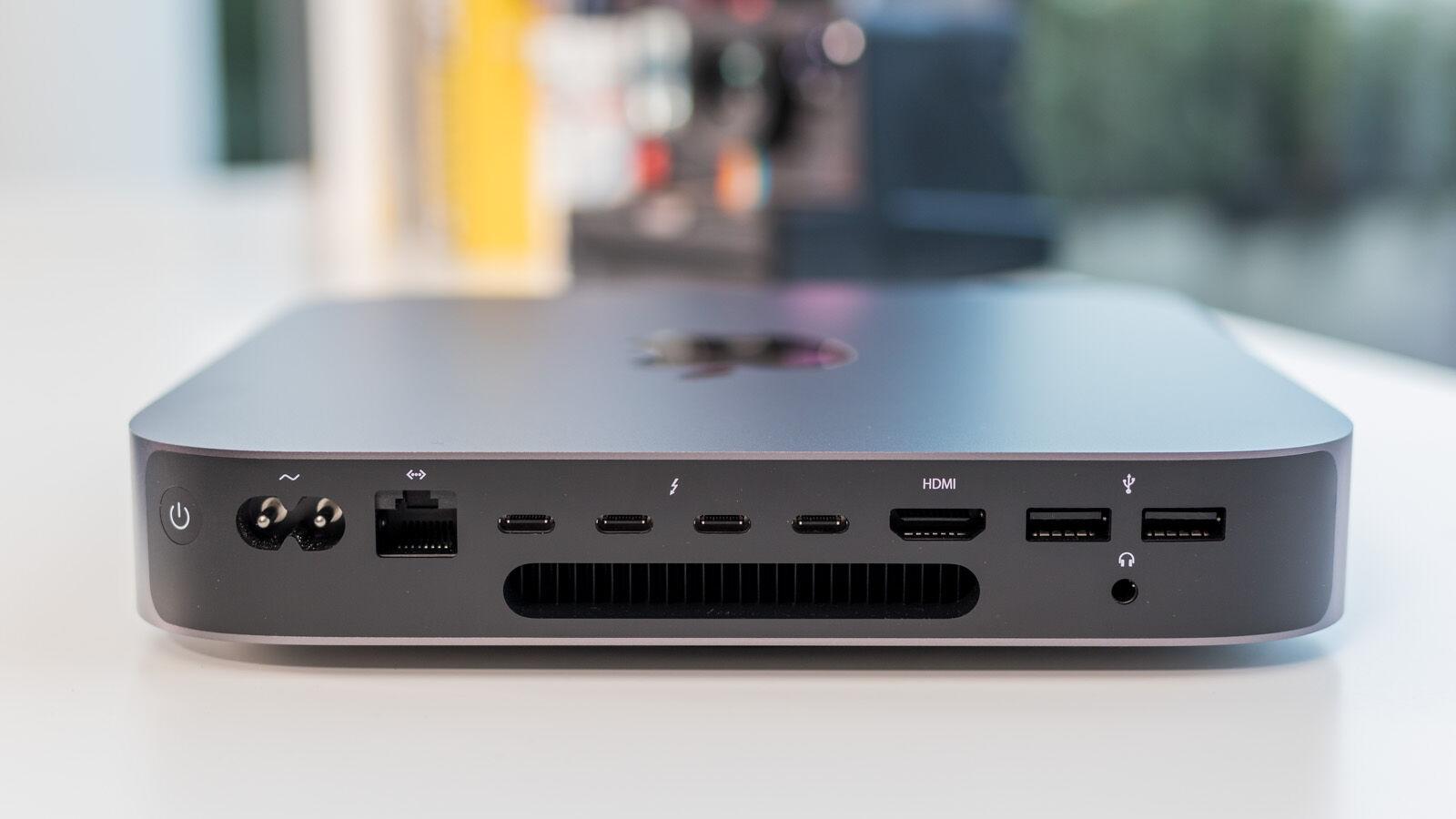

Mac or MacBook for photo editing?
Selecting a Mac for your photo editing depends on how you intend to use the device. Do you want to be able to edit photographs on the go or would you prefer to do your edits from the comfort of your studio?
If you know that you will need to edit out in the field then the MacBook Pro is clearly the way to go. But what if you want a big display to edit photographs on? The 16in MacBook Pro display is large, but you might even find that 16in display cramped if you are working on particularly large and high resolution images. In that case you would be wise to plug a second display into your MacBook when you are back at your desk.
Now that Apple no longer sells the 27in iMac that isn’t really an option we would suggest you consider (even though you may still find stock of these Intel-powered Macs at various resellers). The 24in iMac does offer a great display, but we feel that the M1, due to its graphics and RAM limitations, wouldn’t really be sufficient. The Mac mini has the same disadvantage.
There is one other Mac desktops you could consider though: the Mac Studio, for which you would need to purchase an external display (but you may already own one anyway), offers the cheapest way to get your hands on an M1 Max, and is the only way to get an M1 Ultra. However, we think that the M1 Pro might be more suited to the needs of a photographer, and that’s only available in the MacBook Pro.
Based on that we think that a MacBook Pro is the best choice for photographers, but which model? Read on to find out.
Best MacBook for photo editing
Pretty much any of the current MacBook range will be good enough for photo editing, but your needs will determine what the best option is for you.
If you are a professional photographer likely to be editing very high res and RAW images then the 16in MacBook Pro, with its large screen and powerful configuration, would be the best option.
The fact that this model allows you to maximize your RAM to 64GB and max out the storage is a real point in its favour. Although the same applies to the 14in MacBook Pro, which could be a way to save some money if you don’t need the extra screen size.
The M1 Pro or M1 Mac graphics, compared to the graphics in the M1 Macs, are likely to be a real bonus if you are working with large images. You may be considering discrete graphic options of the older Intel Macs, but our advice would be to move away from Intel to make sure you are best equipped for the future. Apple’s graphics options have proven themselves to be worthy contenders.
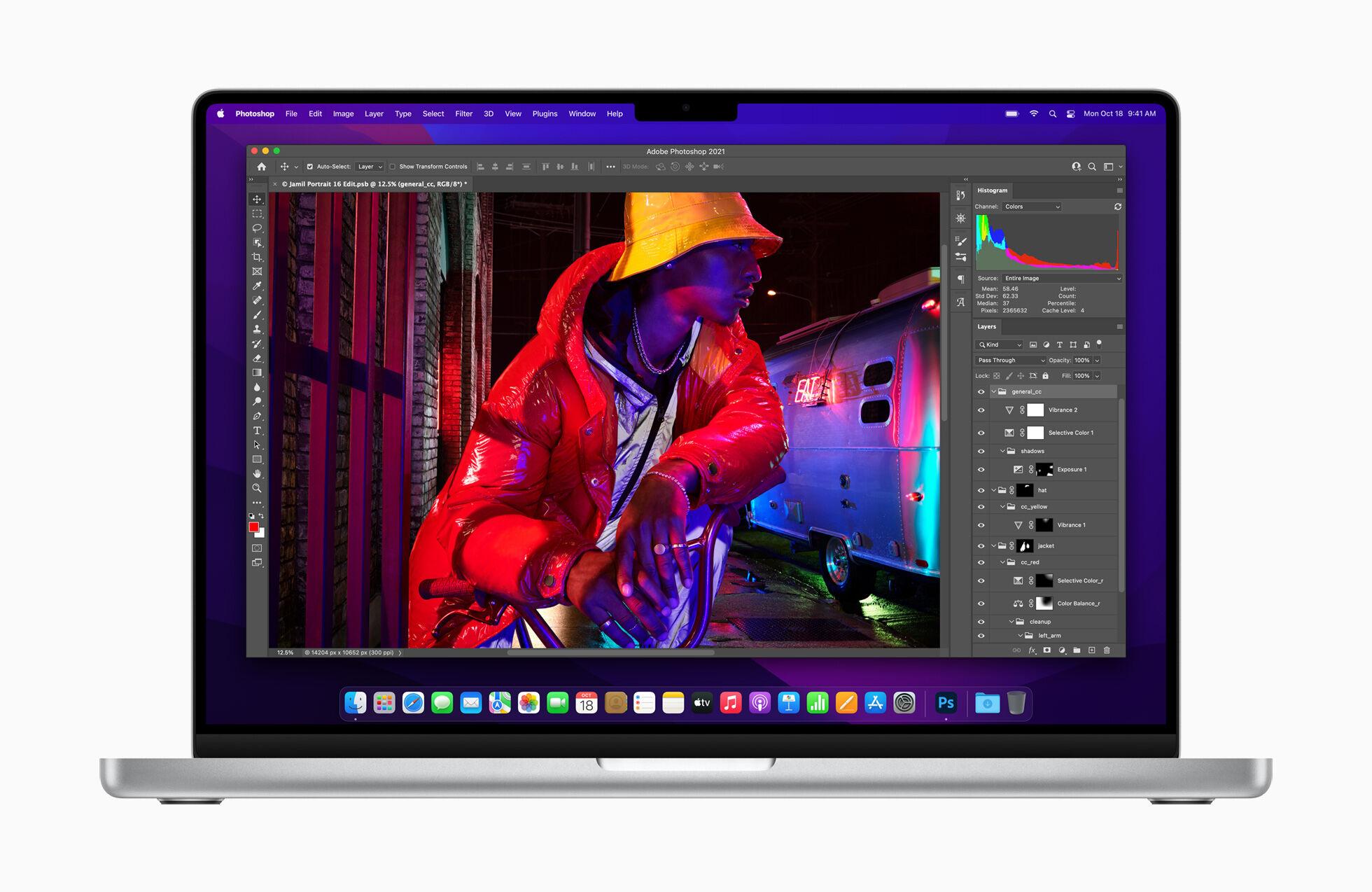

Here are the best prices for the 16in MacBook Pro (RRP from £2,399/$2,499) right now:
, #aff-table-container-6AEDB06F-1215-4605-94FC30B2D3CD6DFB.aff-table-container–loading .aff-table__header{
display: none;
}
And the best prices for the 14in MacBook Pro (RRP from £1,899/$1,999) right now:
, #aff-table-container-40A72F3F-CC8A-4306-834529AB899D6110.aff-table-container–loading .aff-table__header{
display: none;
}
But if your needs are a little less extreme and your wallet a little less full, then the M1 Macs have proven themselves to be real beasts and would still be an excellent choice.
You could choose the 2020 M1 MacBook Pro: sure it has a smaller 13in display, but you could plug in a second display and use that when in the office. Portability is certainly in the 13in MacBook Pro’s favour, although we would recommend the 512GB model with 16GB RAM.
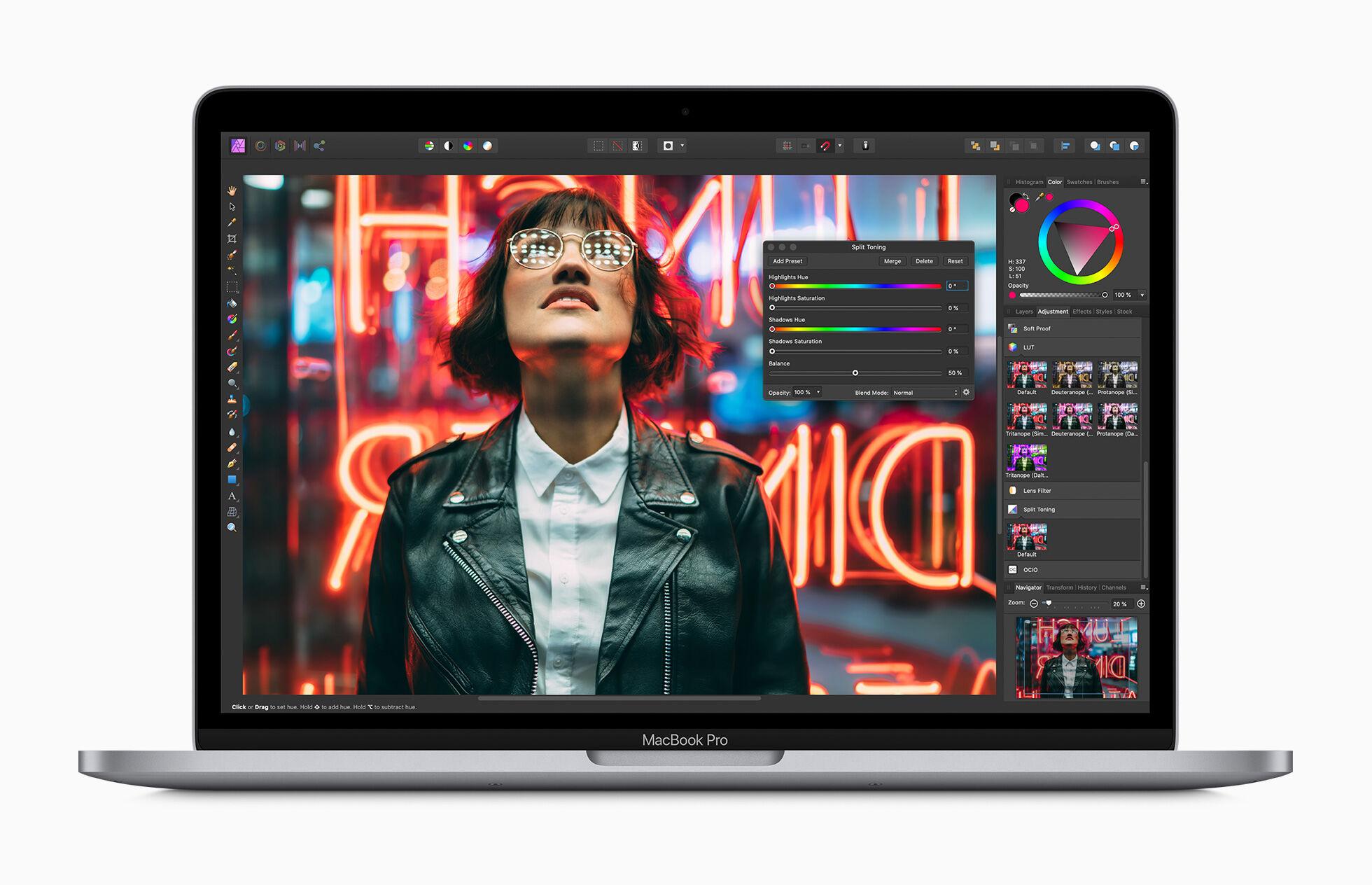

Here’s the best price on the M1 MacBook Pro with 512GB SSD (RRP: £1,499/$1,499) right now:
, #aff-table-container-29089EAA-6111-49E9-91AB572799B45668.aff-table-container–loading .aff-table__header{
display: none;
}
For more deals on the various MacBook models check our best deals round ups: Best MacBook Pro deals and Best MacBook Air deals.
Best Mac desktop for photo editing
If you don’t want to use a MacBook with an external display, and if you do your editing at home rather than on site, then there are plenty of decent options when it comes to Macs.
As we mentioned above, the cheapest way to get the M1 Max is in the Mac Studio. Here you can get a Mac desktop with 10-core CPU/24-core GPU M1 Max, 32GB unified memory, 512GB SSD for £1,999/$1,999. The equivalent MacBook Pro would cost $3,099/£2,999 (although it would feature a 1TB SSD, but that’s just an additional £200/$200). You’ll have plenty of money left over for a really good display.
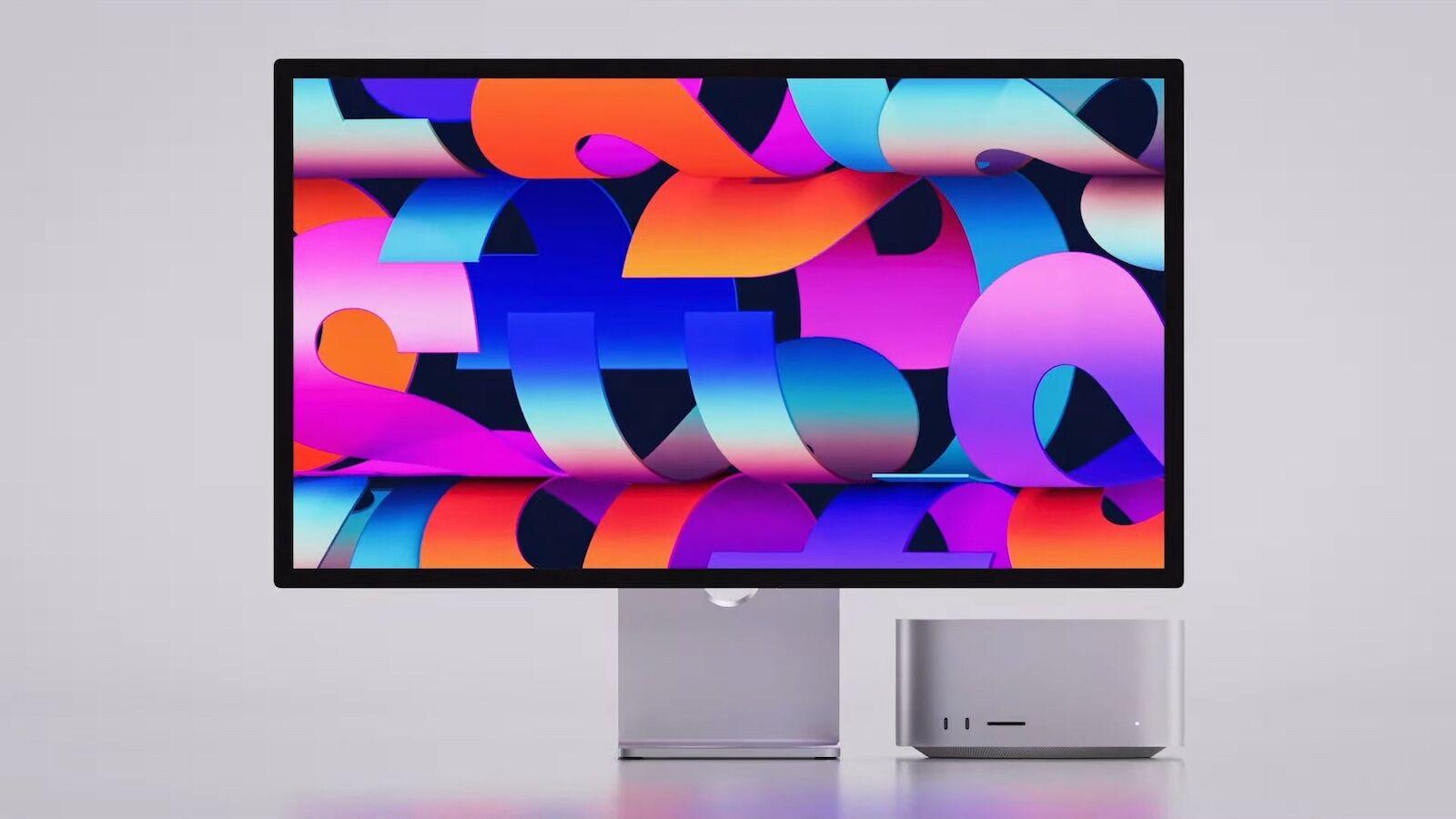

Here are the best prices right now for the Mac Studio with M1 Max, RRP £1,999/$1,999:
, #aff-table-container-1BB05040-0AE8-4EE0-8E52A48FFF6A50DE.aff-table-container–loading .aff-table__header{
display: none;
}
The 27in iMac with its 5K display, discrete graphics, RAM and storage options might have been good choice for photographers, as it is for any creative pros, however Apple has now stopped selling that Mac and we don’t know whether the company has plans to update it in the future. Read 27in iMac discontinued, but not necessarily dead.
While resellers sell off old stock of the old iMac you may see some good deals – just beware that these are Intel-powered and therefore less future-proofed. Here’s the best prices for the standard model with 10th-gen, 6-core, 3.1GHz (RRP was £1,799 / $1,799):
, #aff-table-container-6DA17485-AE80-4330-999BFA7E3AA1F8F6.aff-table-container–loading .aff-table__header{
display: none;
}
Another iMac you may want to consider is the 24in iMac which launched in May 2021 with its 4.5K display. This Mac has the same disadvantages as the other M1 Macs – maximum of 16GB RAM and no discrete graphics, but it does have an excellent display.
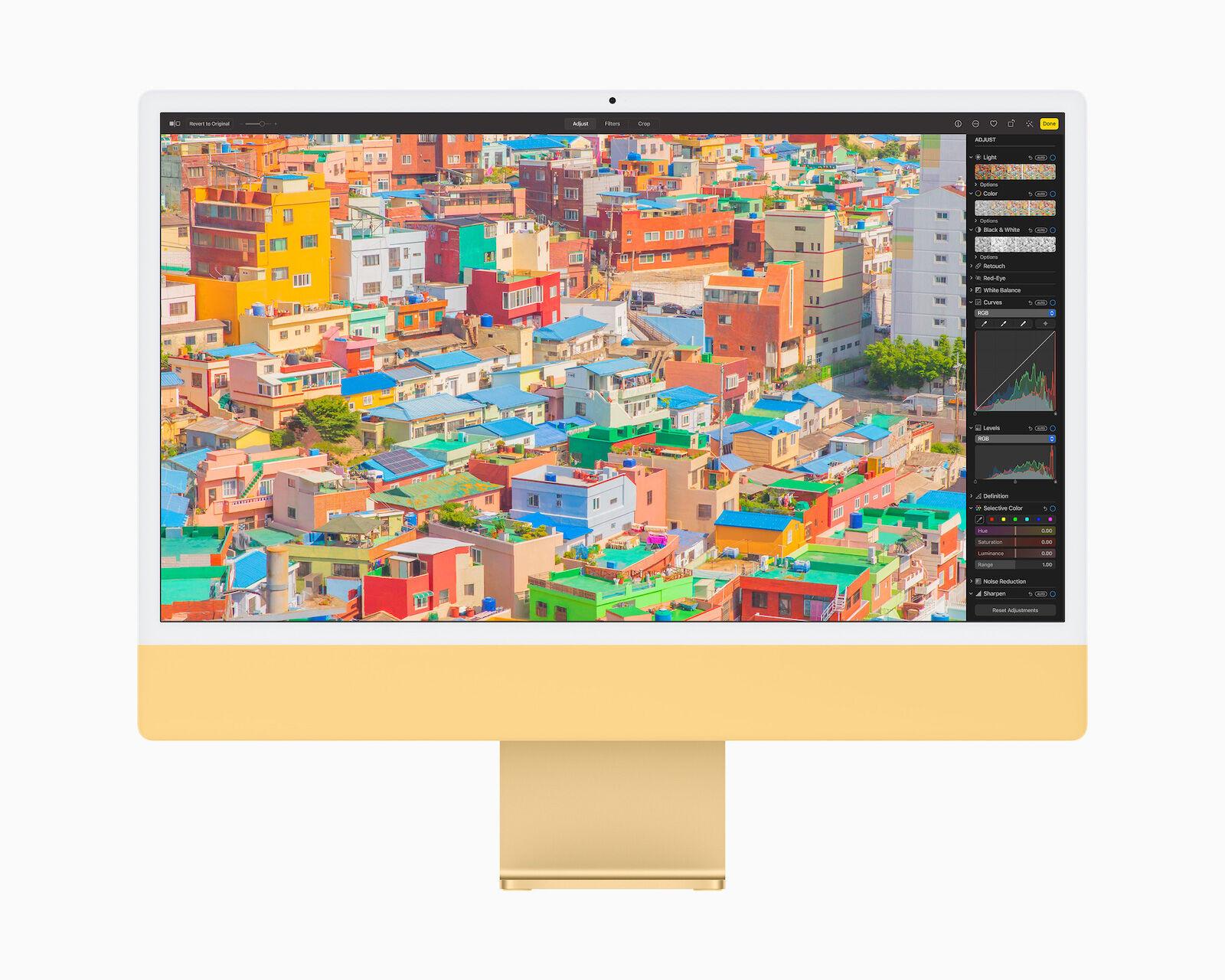

If the 24in iMac appeals to you here are the best prices for the top of the range model, which comes with 512GB SSD, 8-core CPU and 8-core GPU (RRP £1,649 / $1,699):
, #aff-table-container-BC9DD5CC-3DA8-4909-BF427B2905BB37E5.aff-table-container–loading .aff-table__header{
display: none;
}
There is an alternative Mac desktop option that we think you should consider. The 2020 M1 Mac mini brings the M1 processor and graphics combo for a price that starts at just £699/$699, although we suggest you spend a little more to get the 512GB model.
Naturally, due to the Mac mini’s design, you’ll need to factor in the price of a decent external display.
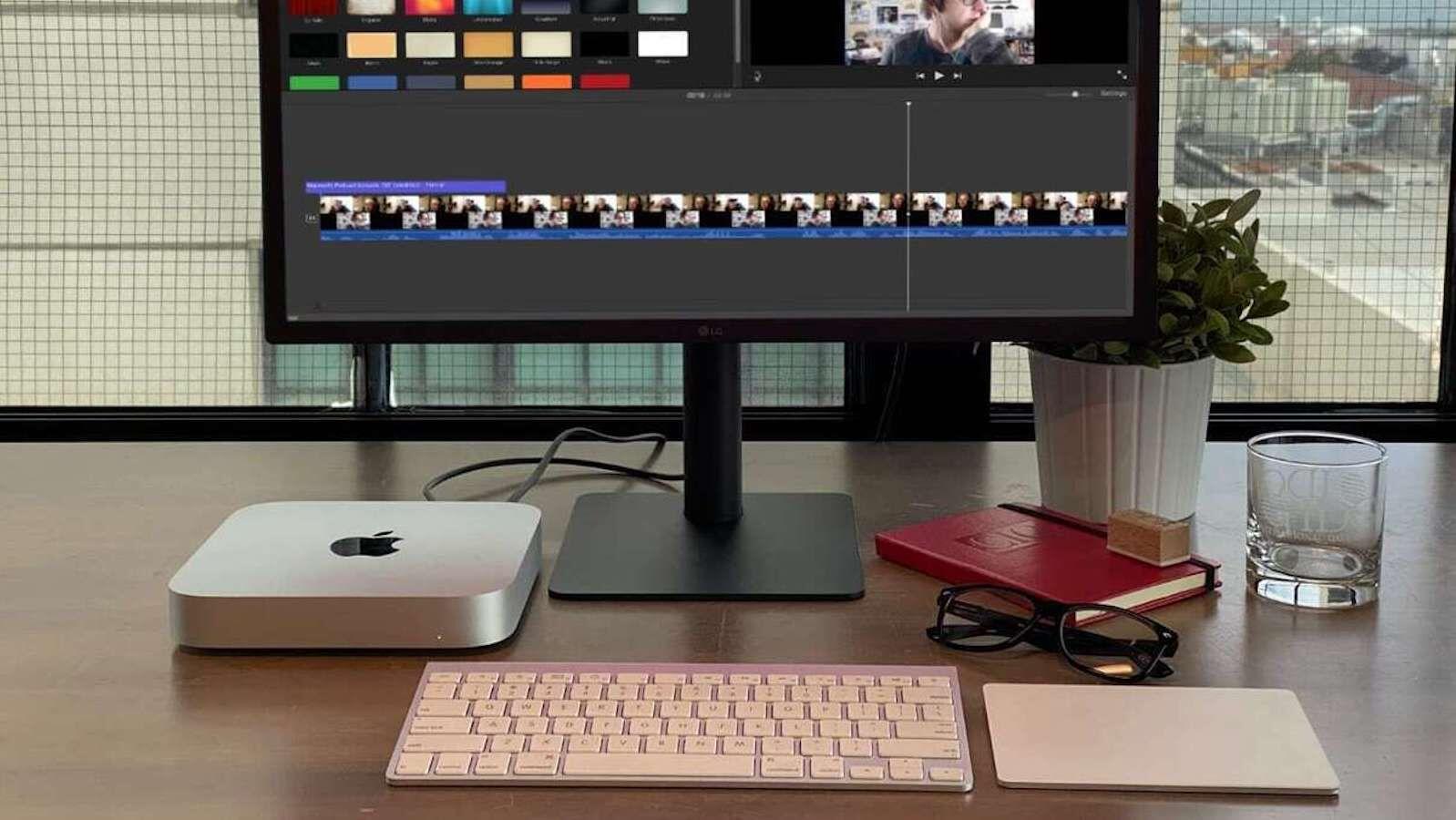

The M1 Mac mini with 8‑Core CPU, 8‑Core GPU and 512GB SSD usually costs £899/$899, here are the best deals right now:
, #aff-table-container-1E2A663E-AFE1-4282-96103166BBA021DA.aff-table-container–loading .aff-table__header{
display: none;
}
Decided which Mac you want? Don’t pay more than you should. Check our best deals round ups: Best iMac deals and Best Mac mini deals.
So, there you go, our choices for the best Macs you can use to edit your images. To see which software packages you can use with them, read our guides to the best pro photo editors for Mac and best free (or cheap) photo editing software for Mac.


Comments are closed, but trackbacks and pingbacks are open.